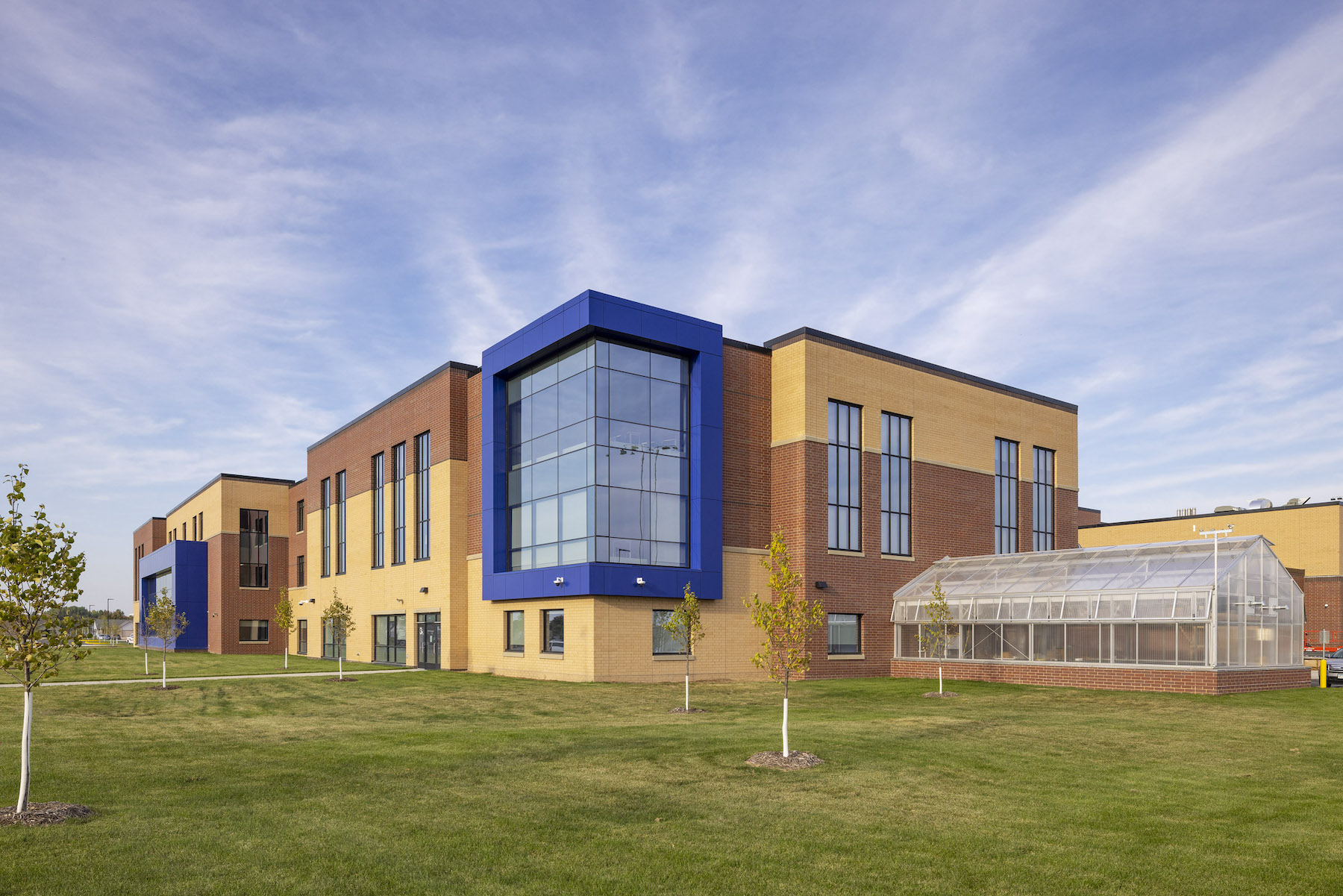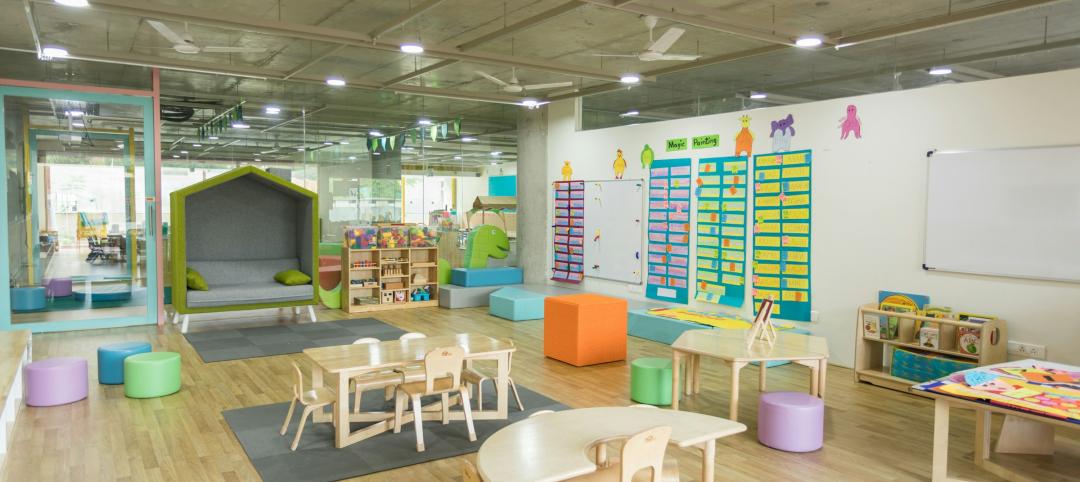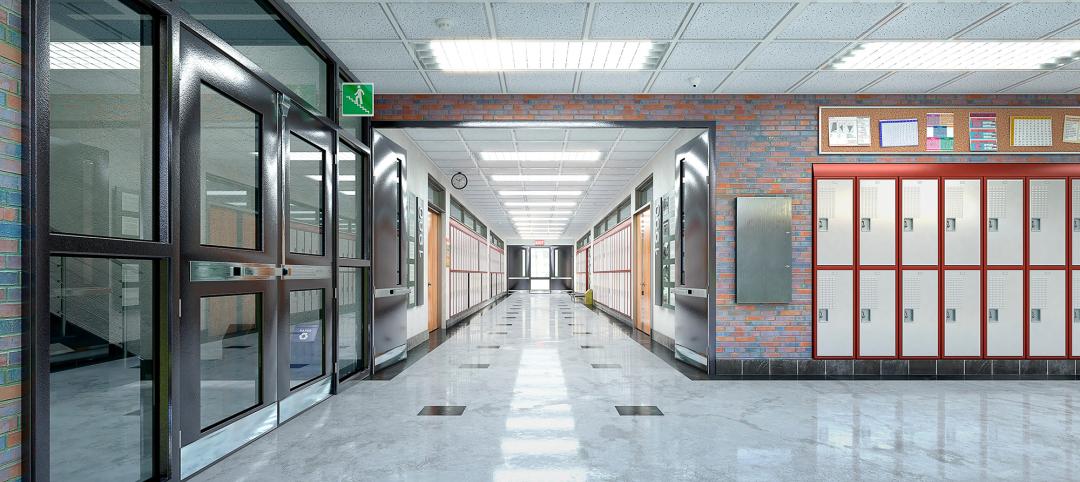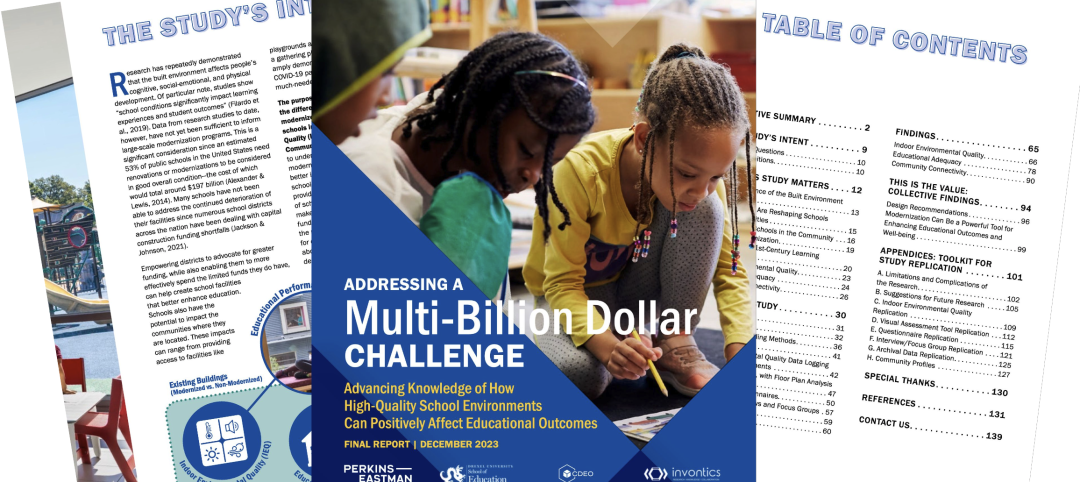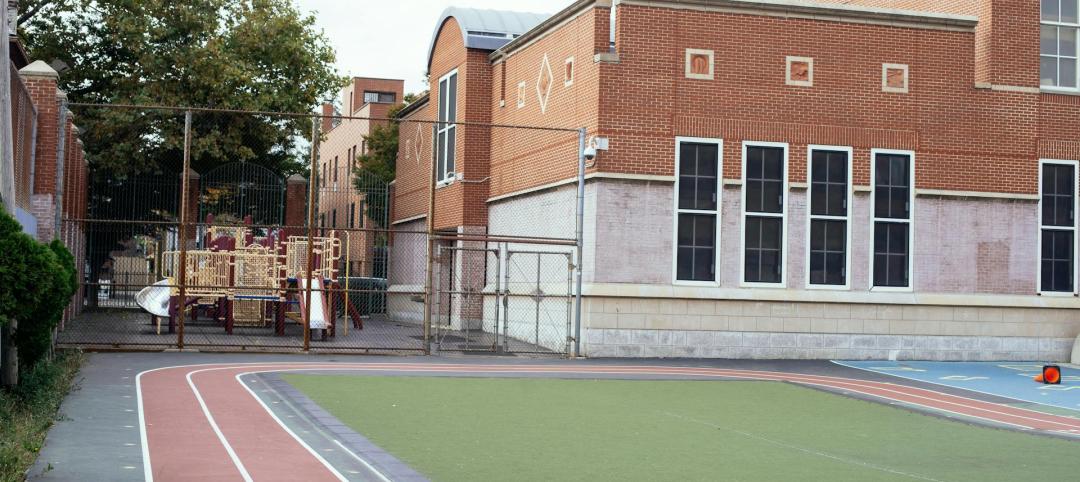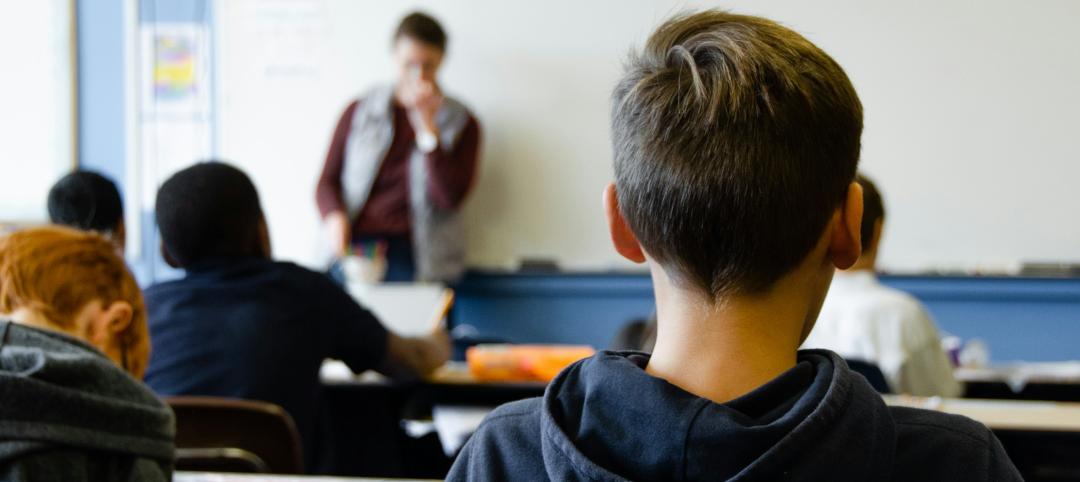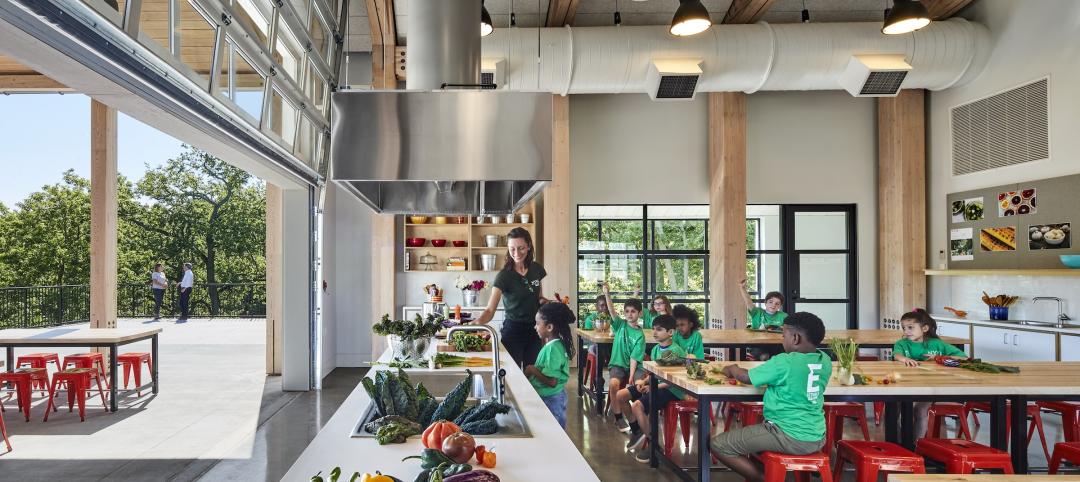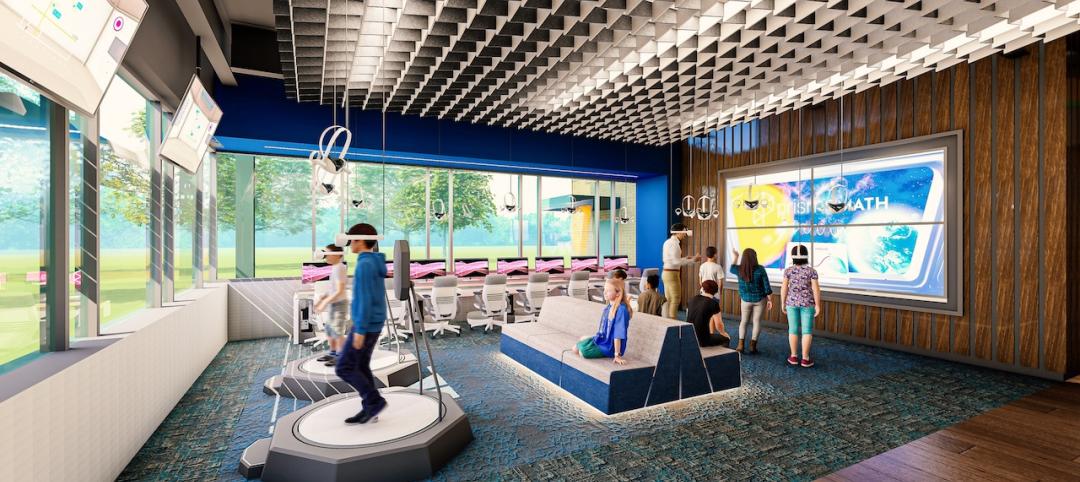Owatonna Public Schools in Minnesota recently completed the $99 million, 317,000-sf Owatonna High School for Independent School District 761.
The school, which accommodates 1,600 students, has classroom and lab spaces supporting career pathways toward nursing, culinary arts, digital fabrication, science and engineering, publishing and digital content creation. Students can earn certificates, college credits, and career credentials, said Jeff Elstad, superintendent of Owatonna Publics Schools.
The project’s Building Team was led by Wold Architects & Engineers and the construction manager Kraus-Anderson. Federated Insurance, which is headquartered in Owatonna, donated $20 million plus the land for the new high school. Other private donors, contributing more than $4 million, included Mayo Clinic Health System, Viracon, Wenger Corporation and Wenger Foundation (Wenger’s name is on the school’s performing arts center), Gopher Sport, Life Fitness/Cybex, Owatonna Foundation, and 761 Foundation.
St. Paul-based Wold had been attached to this project for nearly a decade. “We are excited to see how this school realizes the district’s vision for education for many years to come, and becomes a role model for the area in high school education,” said Paul Aplikowski, a Partner at Wold, in a prepared statement.
School offers a sense of home
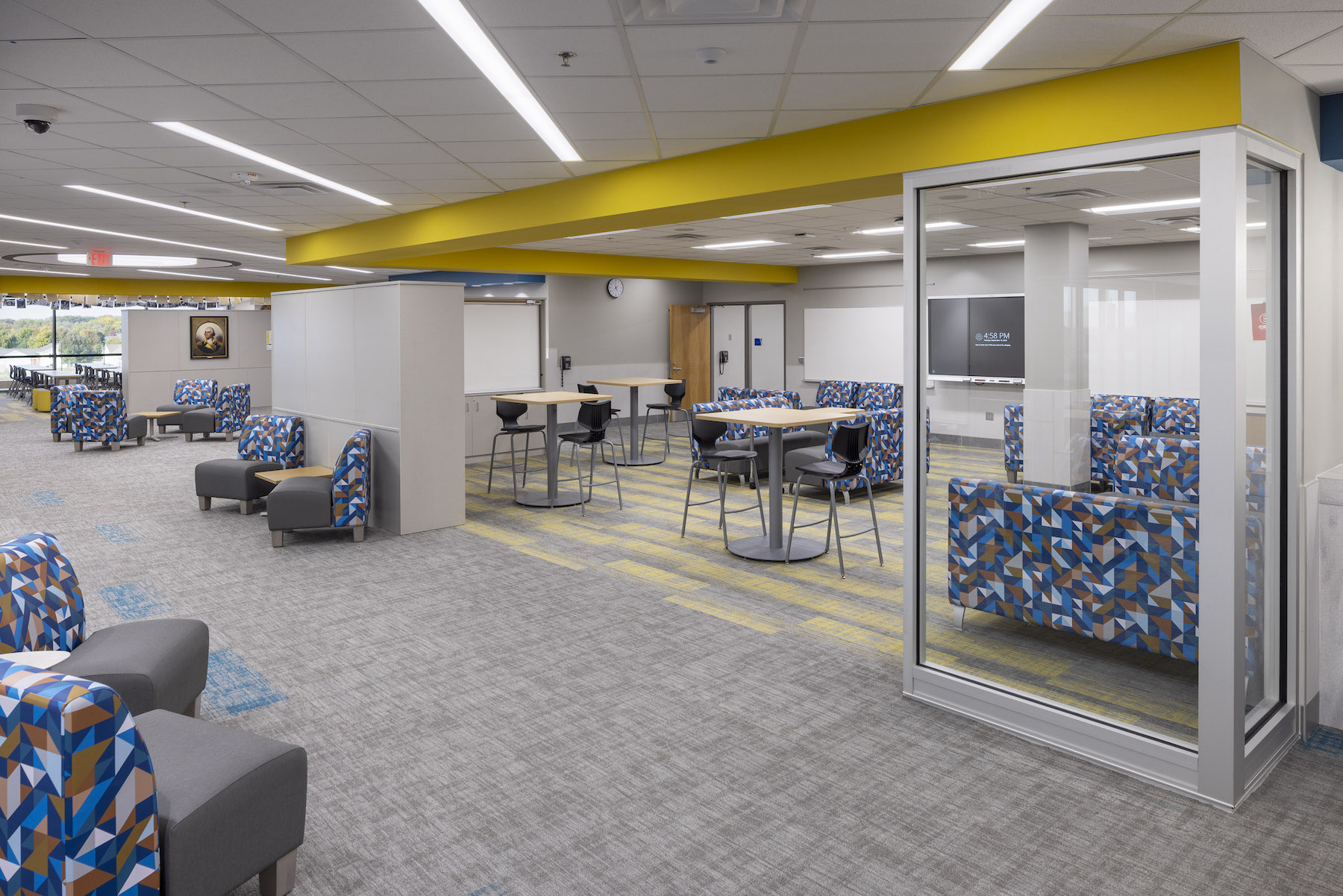
This school construction is part of a $112 million district bond referendum, which voters passed in November 2019. Construction began in May 2021 and was completed last August. The new building combines structural steel and precast concrete, with an exterior facade comprised of brick and metal panels along with a substantial amount of glazing to bring abundant natural light into the building.
The main curtain wall at the entrance to the building is 66 ft wide by 31 ft tall. Interior finishes include terrazzo flooring throughout the commons and fitness areas, prefinished interior panels in the auditorium, and numerous locations of tile, hardwood panels and metal panels covering the walls and column wraps.
The three-story school on 90 acres features a commons area that, according to Wold, evokes a town square. The classrooms are designed to provide a sense of home and place.
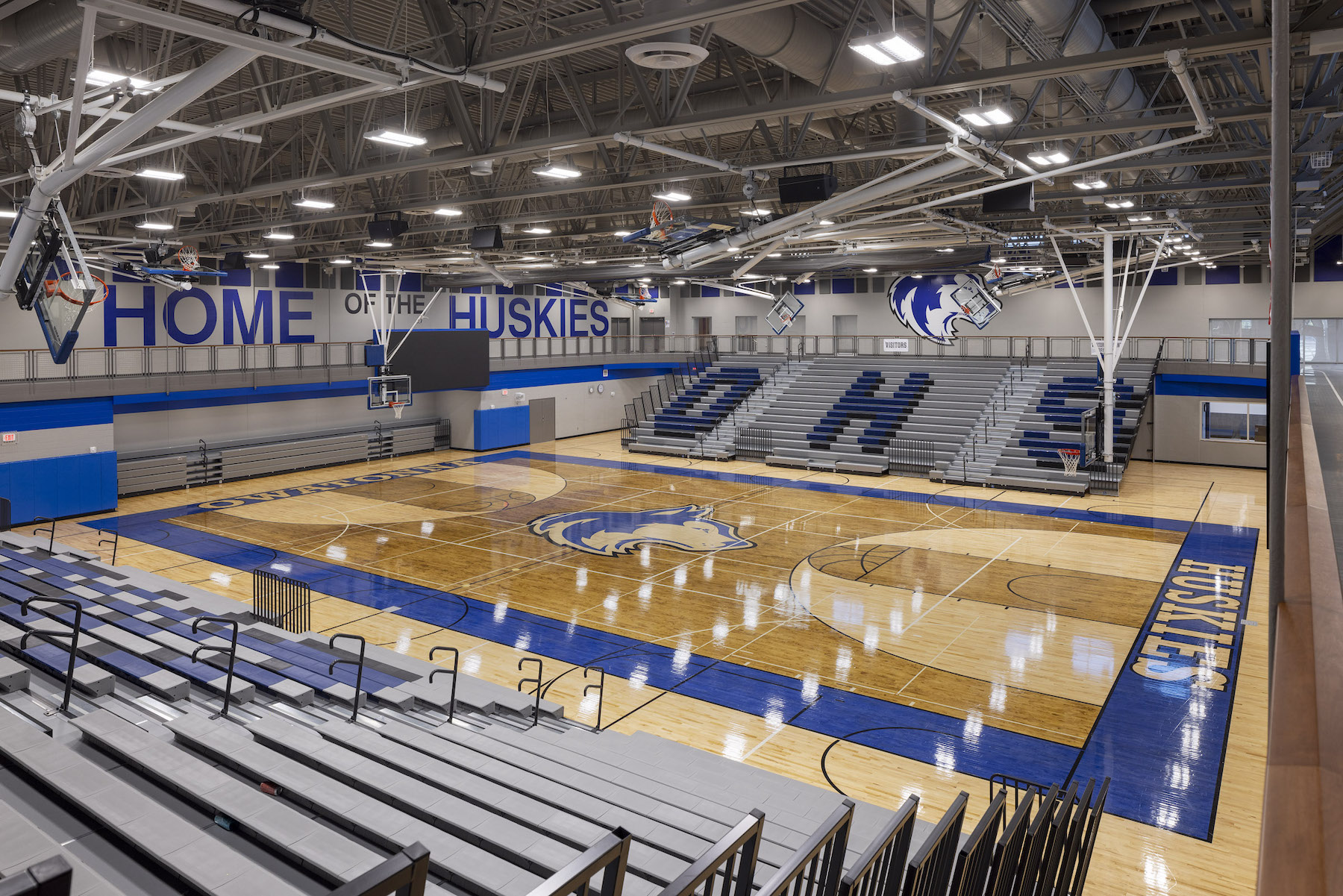
The campus includes a 3,451-seat football stadium, two multipurpose athletic fields and two grass fields, eight tennis courts, two softball fields, two baseball fields, a gymnasium, and an 825-seat auditorium. The campus also has four storage buildings for athletics, and 890 parking spaces.
“Owatonna Public Schools has been a fantastic partner during the entire construction process, where close communication and coordination was needed to meet all expectations,” said Michael Stenbeck, Kraus-Anderson’s project manager, in a prepared statement. “It has been amazing to witness jaws drop as students and the community walk into the new facility.”
Related Stories
K-12 Schools | Apr 10, 2024
Surprise, surprise: Students excel in modernized K-12 school buildings
Too many of the nation’s school districts are having to make it work with less-than-ideal educational facilities. But at what cost to student performance and staff satisfaction?
K-12 Schools | Apr 1, 2024
High school includes YMCA to share facilities and connect with the broader community
In Omaha, Neb., a public high school and a YMCA come together in one facility, connecting the school with the broader community. The 285,000-sf Westview High School, programmed and designed by the team of Perkins&Will and architect of record BCDM Architects, has its own athletic facilities but shares a pool, weight room, and more with the 30,000-sf YMCA.
Security and Life Safety | Mar 26, 2024
Safeguarding our schools: Strategies to protect students and keep campuses safe
HMC Architects' PreK-12 Principal in Charge, Sherry Sajadpour, shares insights from school security experts and advisors on PreK-12 design strategies.
K-12 Schools | Mar 18, 2024
New study shows connections between K-12 school modernizations, improved test scores, graduation rates
Conducted by Drexel University in conjunction with Perkins Eastman, the research study reveals K-12 school modernizations significantly impact key educational indicators, including test scores, graduation rates, and enrollment over time.
K-12 Schools | Feb 29, 2024
Average age of U.S. school buildings is just under 50 years
The average age of a main instructional school building in the United States is 49 years, according to a survey by the National Center for Education Statistics (NCES). About 38% of schools were built before 1970. Roughly half of the schools surveyed have undergone a major building renovation or addition.
Construction Costs | Feb 22, 2024
K-12 school construction costs for 2024
Data from Gordian breaks down the average cost per square foot for four different types of K-12 school buildings (elementary schools, junior high schools, high schools, and vocational schools) across 10 U.S. cities.
K-12 Schools | Feb 13, 2024
K-12 school design trends for 2024: health, wellness, net zero energy
K-12 school sector experts are seeing “healthiness” for schools expand beyond air quality or the ease of cleaning interior surfaces. In this post-Covid era, “healthy” and “wellness” are intersecting expectations that, for many school districts, encompass the physical and mental wellbeing of students and teachers, greater access to outdoor spaces for play and learning, and the school’s connection to its community as a hub and resource.
K-12 Schools | Jan 25, 2024
Video: Research-based design for K-12 schools
Two experts from national architecture firm PBK discuss how behavioral research is benefiting the design of K-12 schools in Texas, Florida, and other states. Dan Boggio, AIA, LEED AP, NCARB, Founder & Executive Chair, PBK, and Melissa Turnbaugh, AIA, NCARB, Partner & National Education & Innovation Leader, PBK, speak with Robert Cassidy, Executive Editor, Building Design+Construction.
K-12 Schools | Jan 8, 2024
Video: Learn how DLR Group converted two big-box stores into an early education center
Learn how the North Kansas City (Mo.) School District and DLR Group adapted two big-box stores into a 115,000-sf early education center offering services for children with special needs.
Designers | Jan 3, 2024
Designing better built environments for a neurodiverse world
For most of human history, design has mostly considered “typical users” who are fully able-bodied without clinical or emotional disabilities. The problem with this approach is that it offers a limited perspective on how space can positively or negatively influence someone based on their physical, mental, and sensory abilities.


